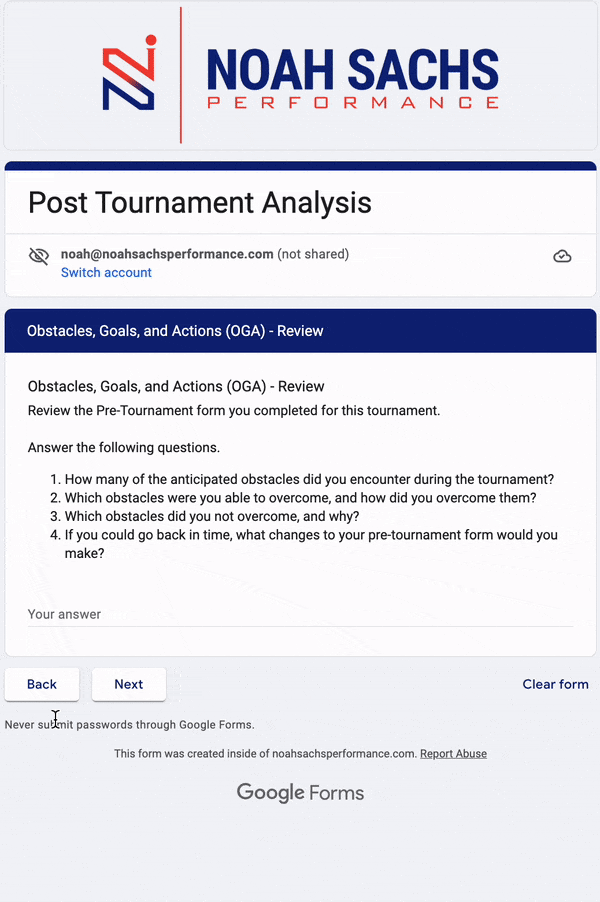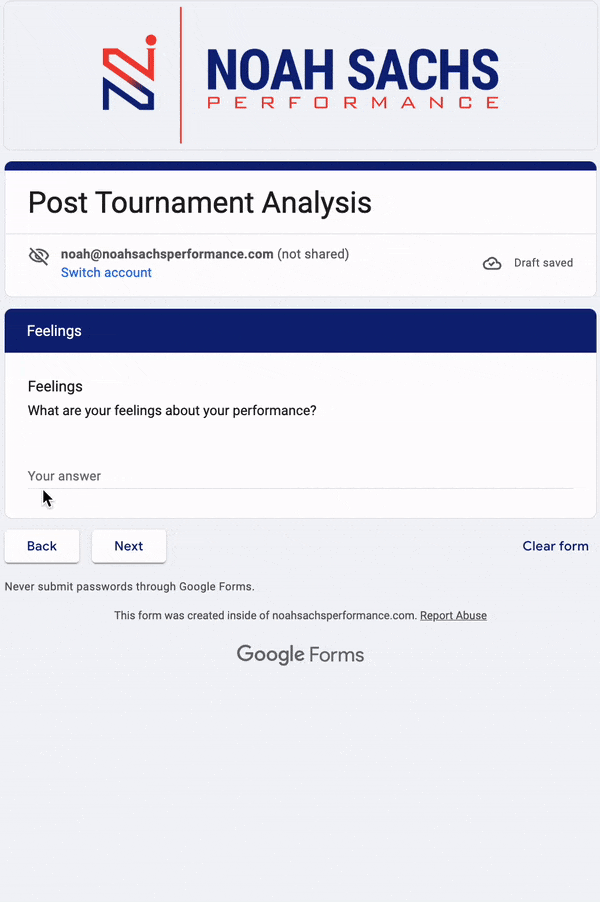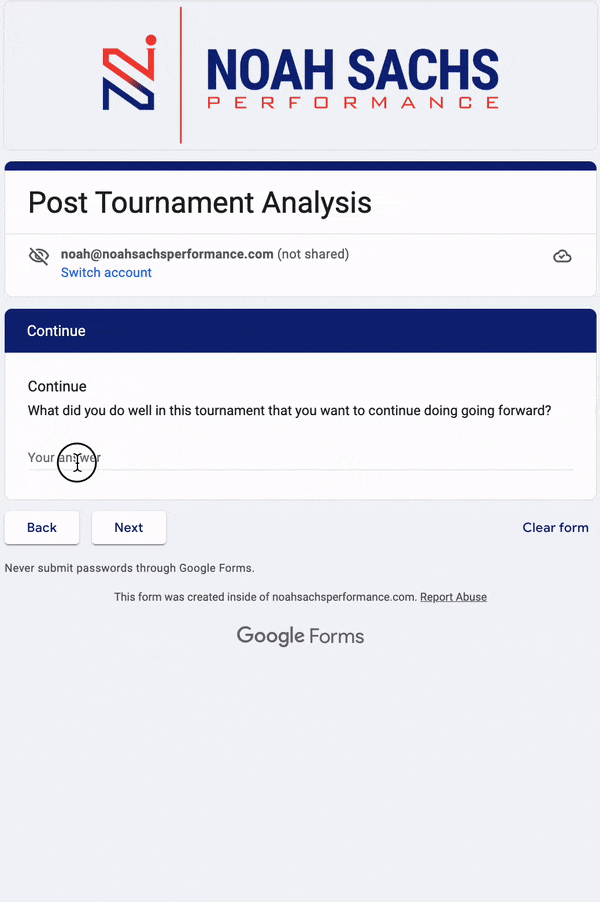Mastering the Art of Post-Tournament Reflection: Tips and Tools for Golfers
Maximizing Performance with Post-Tournament Reflection
Post-tournament reflection is an essential part of the learning process for golfers.
The practice of reflection is a crucial element of the learning process. It enables us to take a step back, to think through our experiences, and to draw meaning from them. Reflection helps us to make sense of what has happened, to consider what we have learned, and to think about how we can use that learning in the future — David Boud
By taking the time to reflect on their performance in a tournament, golfers can analyze their shots and scores, identify areas for improvement, and develop strategies for addressing weaknesses.
We do not learn from experience... we learn from reflecting on experience — John Dewey
In this article, I will share the post-tournament form I use with the golfers I coach and explain the purpose of each question on the form. This can help golfers optimize their performance and set themselves up for success in future tournaments.
Why Use a Post-Tournament Form
Learning from mistakes — An opportunity for golfers to identify mistakes they made during the tournament and learn from them.
Objectivity — Allows golfers to objectively understand how they performed, rather than relying on subjective feelings or emotions.
Practice structure — Help golfers structure their practice sessions by identifying specific areas of their game that need improvement, allowing them to focus their efforts and make the most of their practice time.
Example Pre-Tournament Form
This is the post-tournament form I use with the golfers I coach. The purpose of each question on the form will be explained in the following sections.
Part 0 - Preparatory Work
Golfers should wait at least 60 minutes after the end of a tournament to complete the post-tournament form.
They should also enter their stats into their preferred software before completing the form, as some questions require this information.
Part 1 — Obstacles, Goals, Actions Review
Before answering the questions you will need to review the pre-tournament form that was covered in last week’s post.
Question #1: How many of the anticipated obstacles did you encounter during the tournament
Reflecting on the obstacles anticipated and encountered during a tournament can help golfers to evaluate their pre-tournament preparation, understand the impact of planning on their performance, and inform their future tournament preparation.
Question #2: Which obstacles were you able to overcome, and how did you overcome them?
Golfers should think about the obstacles they successfully navigated during a tournament and the strategies they employed to do so. This can help them identify their strengths and areas where they excel, as well as inform their approach to similar obstacles in the future.
Question #3: Which obstacles did you not overcome, and why?
Golfers should reflect on the obstacles they were unable to overcome during a tournament and consider the reasons why in order to identify areas for improvement and develop strategies for dealing with similar obstacles in the future.
Question #4: If you could go back in time, what changes to your pre-tournament form would you make?
This can help golfers identify areas where their preparation may have been insufficient or where they may have been over-prepared, and inform their approach to future tournament preparation.
Part 2 — Feelings vs. Reality
Question #1: What are your feelings about your performance?
Reflecting on their feelings about their performance can help golfers understand their expectations and perceptions of their own abilities, even if those feelings differ from the objective reality of their performance. This can be helpful for setting realistic goals and developing a plan for improvement in the future.
Question #2: Where did you lose the most shots, where did you gain the most shots, and how does your perception of your performance differ from what the data suggests?
Analyzing performance data from strokes gained analysis and comparing it to their perception of their performance allows golfers to objectively understand their performance, identify discrepancies and patterns, and optimize their practice time to improve their game. This can help them ensure that they are focusing their efforts on the most valuable aspects of their game.
Part 3 — Continue, Improve, Learn
Question #1: What did you do well in this tournament that you want to continue doing going forward?
Without actively recalling what we did well, we are more likely to dwell on negatives, which is particularly important to overcome in the context of the negativity bias, a psychological tendency to give more weight to negative experiences or events.
Question #2: What didn't go well in this tournament that you want to improve upon during the next tournament?
Reflecting on areas for improvement helps golfers develop a plan to address weaknesses and set goals for improvement. This can inform tournament preparation and focus efforts on valuable aspects of their game.
Question #3: What did you learn through competing in this tournament?
It is important for golfers to learn from every tournament they compete in. Embracing the idea of continuous learning and growth through reflection is an important part of the improvement process for golfers.
Experience is a hard teacher because she gives the test first, the lesson afterward. — Benjamin Franklin.
Conclusion
Post-tournament reflection is an essential part of the learning process for golfers.
By taking the time to reflect on their performance, golfers can identify areas for improvement, develop strategies for addressing weaknesses, and optimize their practice time to improve their game. By continuously learning and improving through reflection, golfers can reach their full potential and achieve success on the course.
It's what you learn after you know it all that counts — John Wooden




